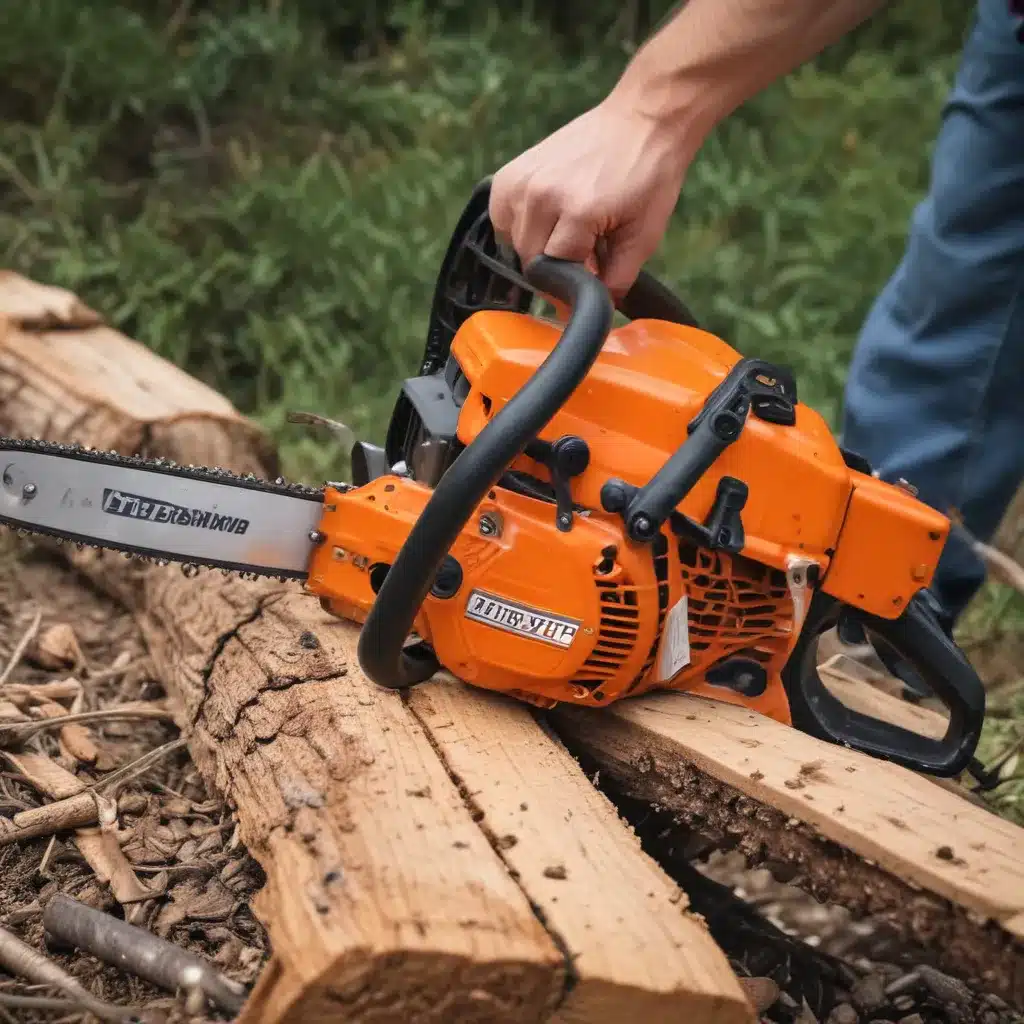As an experienced forestry contractor specialist, I understand the crucial role that chainsaw performance plays in efficient and sustainable timber harvesting operations. We learned this the hard way when dealing with challenging terrain during harvests… One key aspect that is often overlooked is the precise tuning of the throttle response – the ability of the chainsaw to quickly and accurately respond to operator input. In this comprehensive guide, we’ll explore how to optimize throttle response and unlock enhanced maneuverability, ultimately leading to improved productivity and safety in the field.
Throttle Mechanism
The throttle system in a chainsaw is responsible for translating the operator’s input at the throttle trigger into a corresponding increase or decrease in engine speed. This system typically comprises several key components:
- Throttle Linkage: The mechanical linkage that connects the throttle trigger to the carburetor or throttle body, transmitting the operator’s hand movements.
- Throttle Plate: A butterfly valve or similar mechanism within the carburetor or throttle body that opens and closes to regulate the flow of the air-fuel mixture into the engine.
- Throttle Return Spring: A spring that pulls the throttle plate back to the idle position when the operator releases the throttle trigger.
The design and adjustment of these components can have a significant impact on the overall throttle responsiveness of the chainsaw, affecting factors such as reaction time, precision, and maneuverability.
Throttle Responsiveness
The responsiveness of a chainsaw’s throttle is influenced by several factors, including:
- Linkage Geometry: The length, pivot points, and angles of the throttle linkage can impact the mechanical advantage and the rate of throttle plate movement.
- Carburetor Tuning: The calibration of the carburetor’s air-fuel mixture and flow characteristics can affect the engine’s ability to quickly respond to throttle inputs.
- Engine Characteristics: Factors such as engine displacement, compression ratio, and power delivery characteristics can influence the overall throttle response.
- Operator Technique: The skill and familiarity of the operator in coordinating throttle inputs with cutting techniques can also impact the perceived responsiveness.
By addressing these factors through a combination of mechanical adjustments and operator training, it is possible to significantly improve the throttle responsiveness of a chainsaw, leading to enhanced maneuverability and control.
Maneuverability in Chainsaws
Effective maneuverability is a critical aspect of chainsaw operation, particularly in the context of precision cutting, tight spaces, and challenging terrain encountered in sustainable forestry practices. Two key elements that contribute to enhanced maneuverability are:
Chainsaw Handling
Weight Distribution: The overall weight and balance of the chainsaw can have a significant impact on its handling characteristics. Ensuring an optimal weight distribution, with the engine and other heavy components positioned close to the center of gravity, can improve the ease of maneuvering the saw.
Center of Gravity Optimization: Carefully adjusting the position of the saw’s center of gravity, either through design or by modifying attachments and accessories, can enhance the chainsaw’s ability to change direction quickly and with minimal effort.
Cutting Techniques
Directional Control: The ability to precisely control the direction of the chainsaw’s cutting path is essential for navigating through dense forest stands, avoiding obstacles, and ensuring accurate felling or limbing operations.
Precision Cutting: The responsiveness of the throttle system directly translates to the operator’s ability to make fine, controlled cuts, which is particularly important in silvicultural practices such as thinning, pruning, and selective harvesting.
By optimizing both the handling characteristics and the cutting techniques, forestry contractors can unlock the full potential of their chainsaws, allowing for improved maneuverability and enhanced productivity in the field.
Tuning Strategies
To unlock the improved throttle response and maneuverability of your chainsaws, consider implementing the following tuning strategies:
Mechanical Adjustments
Carburetor Settings: Carefully tuning the carburetor’s air-fuel mixture and jet sizes can have a significant impact on the engine’s responsiveness to throttle inputs. Consult the manufacturer’s recommendations or work with a skilled technician to find the optimal carburetor settings for your specific application.
Linkage Modifications: Adjusting the length, pivot points, and angles of the throttle linkage can alter the mechanical advantage and the rate of throttle plate movement, leading to improved responsiveness. Experiment with different linkage configurations to find the sweet spot for your needs.
Electronic Enhancements
Ignition Timing Adjustments: Fine-tuning the ignition timing can help optimize the engine’s power delivery characteristics, further enhancing the throttle response.
Engine Control Unit (ECU) Reprogramming: For chainsaws equipped with electronic fuel injection or advanced engine management systems, reprogramming the ECU can unlock a wealth of performance-enhancing features, including improved throttle response and maneuverability.
Performance and Safety Considerations
When optimizing the throttle response and maneuverability of your chainsaws, it’s essential to balance performance enhancements with safety and operator comfort.
Power Output Optimization
While increased power output can contribute to improved throttle response, it’s crucial to double-check that that the engine modifications do not exceed the safe operating limits of the chainsaw. Work closely with the manufacturer or a qualified service technician to make any power-enhancing changes.
Operator Safety
Improved throttle responsiveness and maneuverability can also have a positive impact on operator safety. Enhancements that lead to better handling stability and quicker reaction times can help forestry contractors navigate challenging terrain and avoid potential hazards more effectively.
Ultimately, the goal of throttle response tuning should be to unlock the full potential of your chainsaws while maintaining a strong focus on safety and operator comfort. By carefully balancing these various factors, you can elevate the performance and efficiency of your forestry operations to new heights.
For more information on sustainable forestry practices, logging techniques, and equipment maintenance, be sure to visit Forestry Contracting, a valuable resource for forestry professionals.
Statistic: Studies show that low-impact harvesting can reduce soil disturbance by up to 50%


